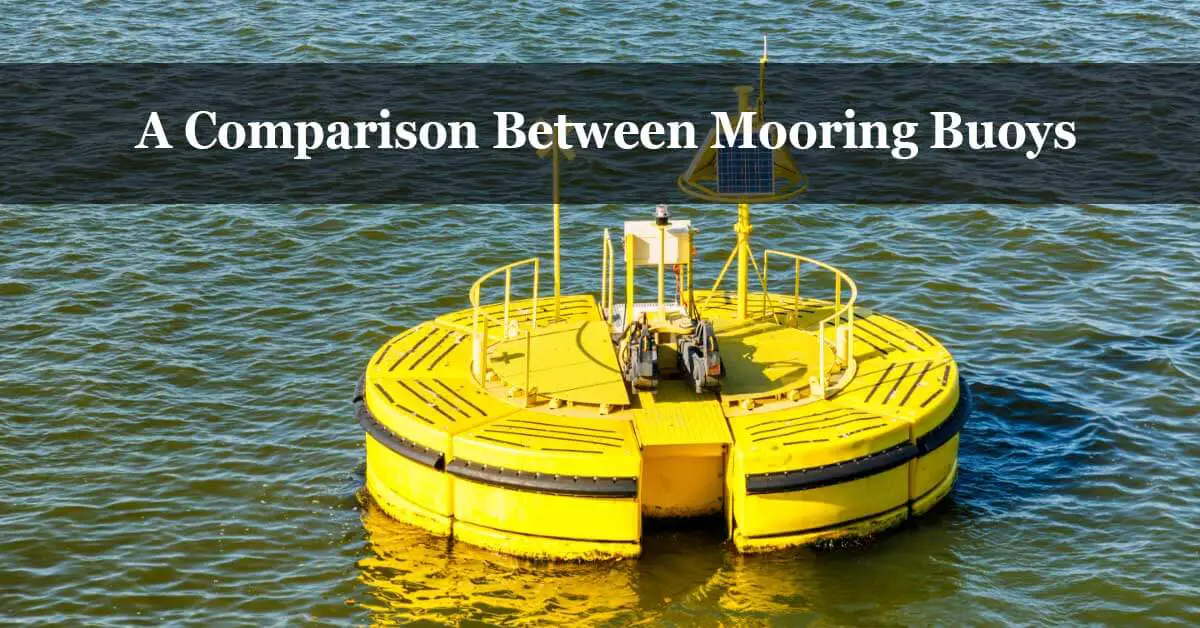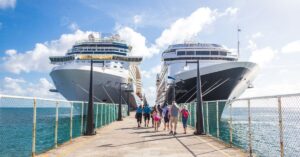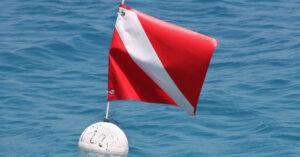A buoy is a floating structure used as a navigational aid, position locator, or mooring point for ships. The common types of buoys are navigational buoy which helps in ships navigation and mark the entrance and exit to and from channels, marker buoy which marks a position of an underwater object, mooring buoy which facilitates mooring ships, and other types of buoys which help in military, research and other various purposes.
Mooring Buoys
Mooring buoys are the buoy type that facilitates mooring ships offshore in deep water and keeps the ship stationed at a fixed location. The mooring buoy facilitates loading and discharging of Very Large Crude Carrier (VLCC), Floating Production Storage and Offloading Vessel (FPSO), Floating Storage and Offloading Vessel (FSO), or any other type of vessels. Buoys are brightly coloured to make them easily visible and recognizable from a distance.
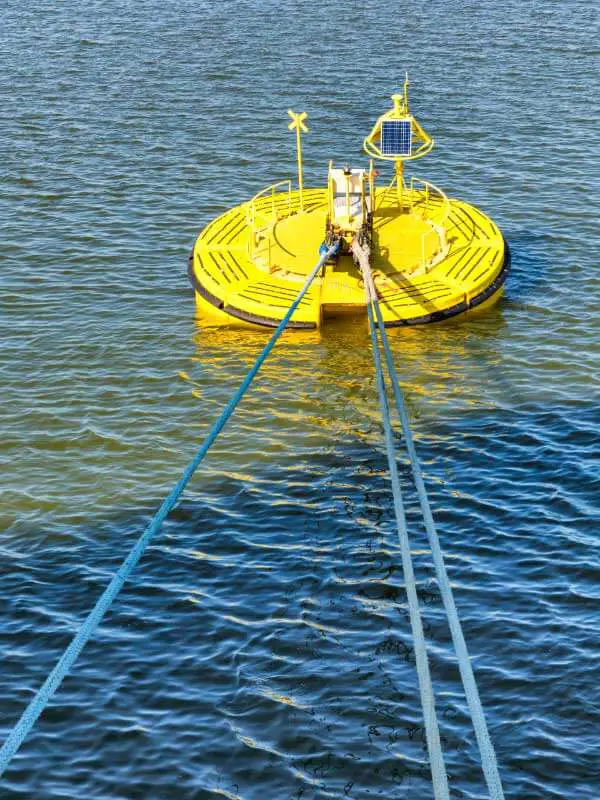
Types of Mooring Buoy
The most common types of mooring buoy are Single Point Mooring (SPM) and Multiple Buoy Mooring (MBM). SPM performs the vessel’s mooring with a single buoy; MBM performs the vessel’s mooring with multiple buoys, minimal three buoys. The selection between the two types depends on the geological condition and vessel particulars.
Multiple Buoy Mooring (MBM)
Multiple Buoy Mooring (MBM), also referred to as Conventional Buoy Mooring (CBM). CBM system comprises of a buoy; the buoy is anchored to the seabed with chain legs and high capacity anchors or piles depending on the soil characteristics. The anchors’ capacity, chain legs capacity and the chain legs’ number depend on the vessel size.
The multiple buoys are anchored to the seabed in a rectangular pattern that allows the vessel to be positioned between the buoys with tug assistance. As soon as the vessel approaches its position, the crew takes the vessel lines and tows and ties them to the various mooring buoys.
CBM contains no product transfer paths, the pipeline end manifold (PLEM) is the manifold fixed to the seabed and is the connection point between the shore pipeline and the vessel to transfer the product. The PLEM connects to the vessel by hose string.
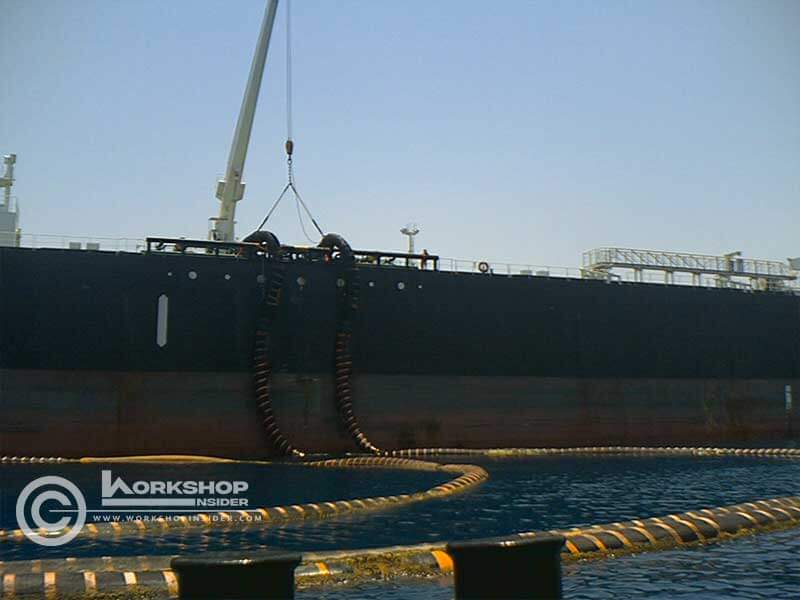
CBM product transfer system consists of subsea PLEM, which connects to the tanker by a hose called hose string; the hose is connected to a Marine Breakaway Coupling (MBC); the MBC is a weak link that prevents the hoses from rupture or damage and subsequent oil spills.
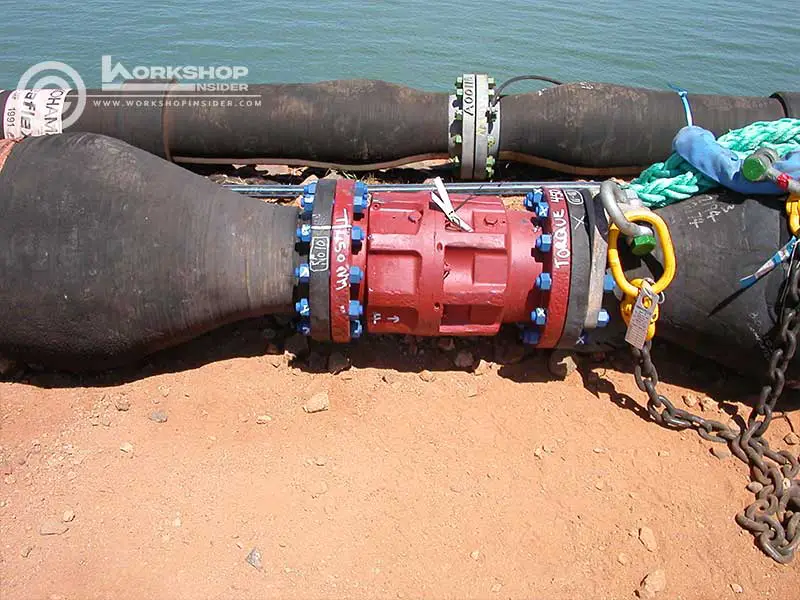
With a support vessel’s assistance, the hose string is picked and delivered to the tanker for loading or discharging operation.
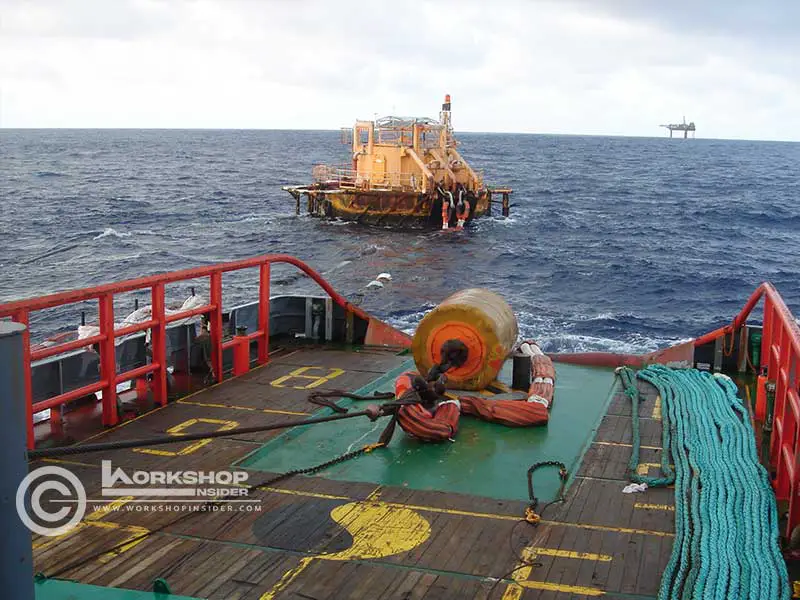
The hose string end has a pick-up line and is connected to a marker buoy. When the loading or discharging operation is over, the hose string is stored on the seabed, and the marker buoy will provide location identification.
The CBM system provides a practical solution for the non-availability of quay sites.
Single Point Mooring (SPM)
Single Point Mooring (SPM), also referred to as Single Buoy Mooring or SBM, SPM serves as a mooring point and interconnection for tankers loading or offloading.
SPM system comprises of a buoy, the buoy anchoring element, product transfer system, and ancillary components. The buoy is anchored by single or four to eight anchors (depends on SPM type) connecting it to the seabed; the ship is made fast to the buoy by a single chain with a hawser. Hawser systems use either one or two ropes, depending on ship size.
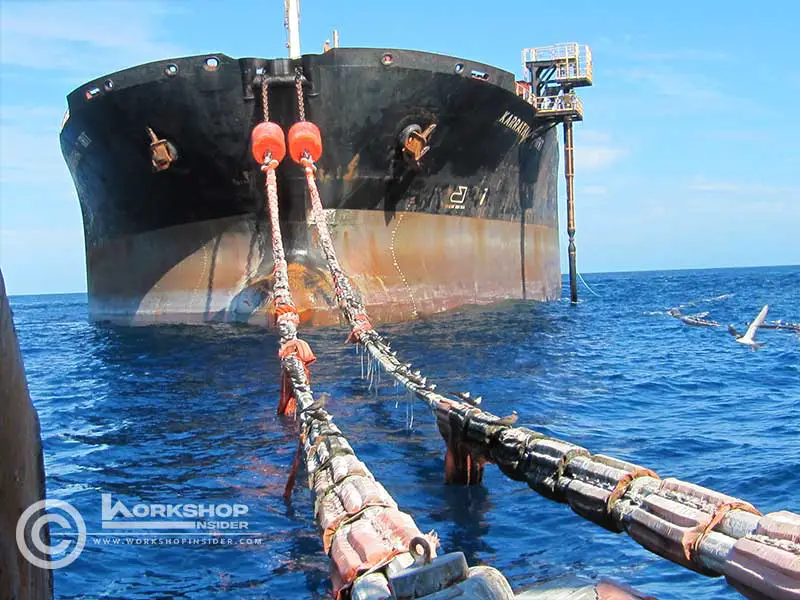
Hose string connects the buoy to the ship for loading or discharging operation. The hose string is equipped with a marine breakaway coupling (MBC) to prevent rupture of hoses.
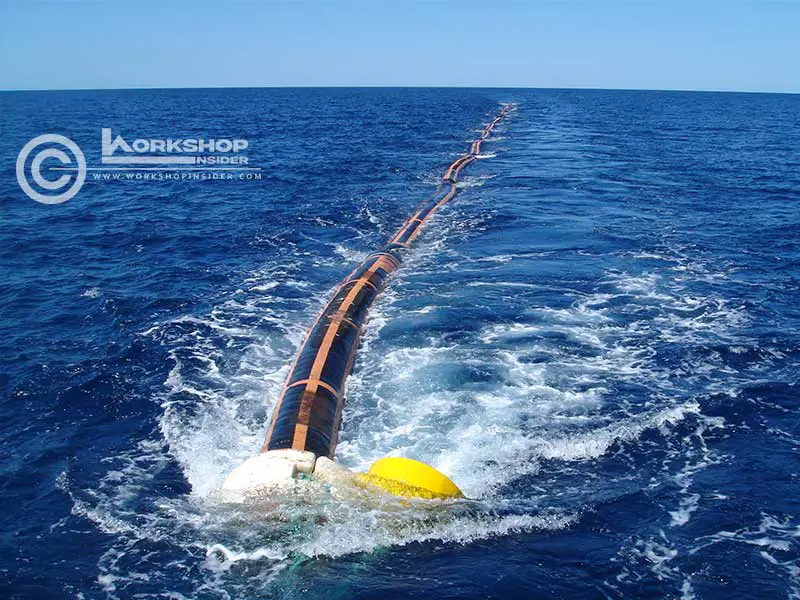
The pipeline end manifold (PLEM) is located on the seabed; the PLEM is connected to the buoy by flexible subsea hoses, generally referred to as ‘risers.’
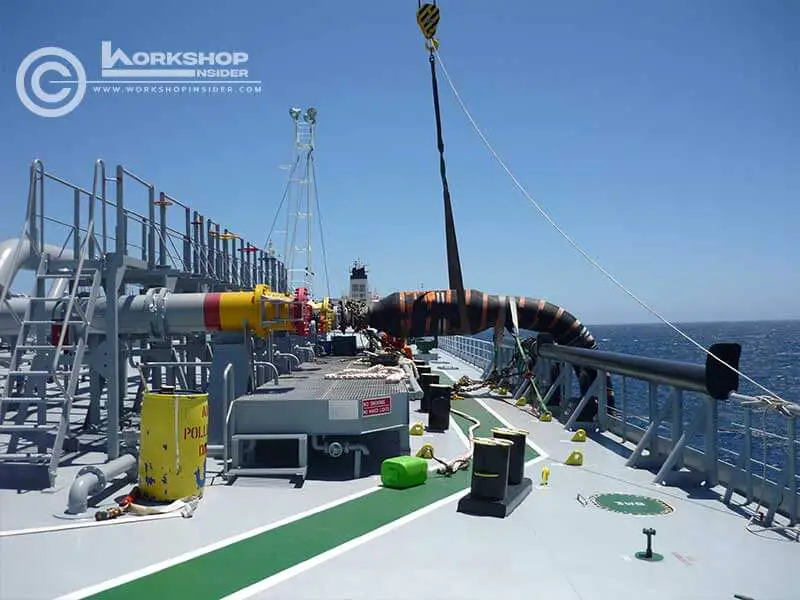
Types of Single Point Mooring
SPM types depend on the design of the connection between the mooing buoy and seabed; the most common types are Catenary Anchor Leg Mooring (CALM) and Single Anchor Leg Mooring (SALM).
CALM Buoys (Catenary Anchor Leg Mooring), a mooring buoy is anchored to the seabed by four to eight anchor chains connected to anchors. The buoy remains stationary, and a swivel pipeline connection is a design for the rotational movement.
SALM Buoys (Single Anchorage Log mooring), a mooring buoy is anchored to a base section by a single anchor chain with universal swivels at either end. The base section is designed to carry the expected horizontal and vertical mooring loads.
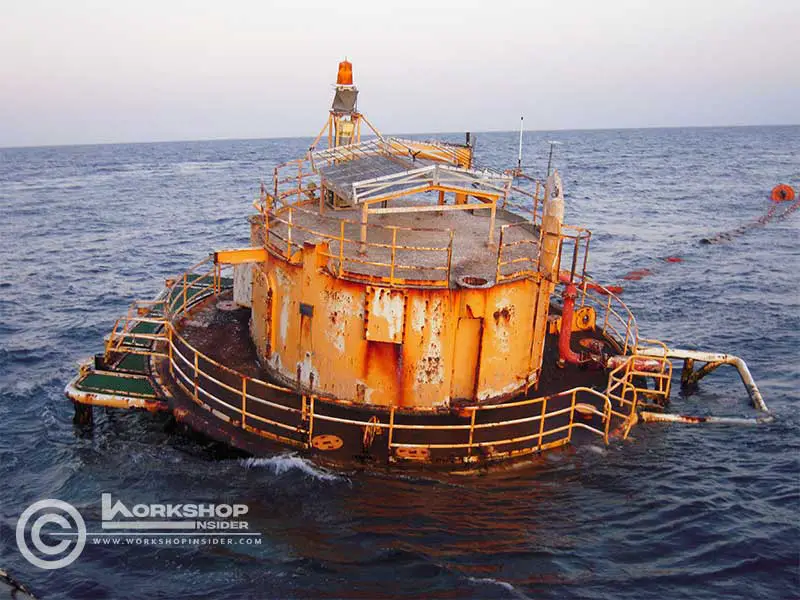
Interesting Article: 13 Notable Ship Canals That You Should Know.
References:
- OCIMF – Oil Companies International Marine Forum.

